San Francisco News and Stories
The Mosaic Laws
The presence of churches and synagogues was an integral part of the development of San Francisco in those early days. They started the first schools, charities, libraries, made it a place safe for women and children and established some of the area's pivotal businesses. For example, the Jews in San Francisco were influential in creating the City's first library and the Presbyterians created the first school and orphanage.
An early member of the First Congregational Church started Bank of America and Levi Straus' family were some of Temple Emanu-El's first members. Of equal importance at the time was the succor these religious institutions provided their members. The San Francisco Jews of the 1850s missed the familiarity of their homelands and clung to their religious traditions for stability. According to historian Fred Rosenbaum, religion for these Jews was a shield against the "immorality and depravity" that characterized San Francisco at that time.
April 10, 1851, Daily Alta California, San Francisco, California, U.S.A.
TO THE ISRAELITES OF SAN Francisco. -- Notice is hereby given that we, the undersigned, have made an arrangement with the butcher Mr. Joseph Begin, 76 Kearny Street, between Commercial and Sacramento, who will supply the Israelites of this place with the finest quality of KUSHER beef, veal and mutton which will be killed in the presence of Mr. Blankenstein and others by a competent and qualified SHACHET, according to the Mosaic laws.
| A. WEISS | I.S. LINCOLN |
| M.S. BLANKENSTEIN | I. SOLOMON |
| T. FRANKEL | BARNET KEESING |
| J. RAPHAEL & CO. | PHILIP MANN |
March 31, 1855, Daily Alta California, San Francsico
ORGANS.-- The Parisian Jews have introduced organs into their Synagogues, and the Greeks have done the same. This is an innovation upon old customs.
September 20, 1857, Daily Alta California, San Francisco
JEWISH NEW YEAR. (Tishrei 1, 5617)
Of all existing enlightened nationalities and forms of faith, the Jewish are undoubtedly the oldest. The nations and creeds of Hindostan and China may claim an equal or even greater antiquity, but they belong to heathenism and semi-civilization. We speak of the Jewish "nationality," and a nationality they have. Without a political dominion or country of their own, scattered throughout all the four quarters of the globe, they still claim to be the chosen people, preserve their separate character, and look forward to the time when, in accordance with their sacred prophecies, they shall again be collected and reestablished in the kingdom of Israel. It is a remarkable and unexampled fact in the history of the world, that the Jews alone of nations handing down sacred books from remote antiquity, have in all their wanderings and wide - dispersions, preserved as a living tongue the language in which their Scriptures were originally composed. Believers in other creeds have original gospels in dead languages; only the Jews hare preserved the original tongue of their prophets.
Every church claims to have a superior holiness; to be the "only saving" church; to possess the exclusive, or least peculiar, favor of Heaven; and such claims the Jewish church make. This claim is founded, not on the supposed force of the evidences for their faith only, nor even principally, but rather on the letter of the Scriptures, as interpreted by them. They cite a vast multitude of passages, among the most prominent of which are the following words of the God of Israel, addressed to the greatest of the prophets and kings:
"Ye shall be unto me a kingdom of 'priests and an holy nation."
" I will establish my covenant between me and thee [Abraham] and thy teed after thee, in their generations, for an everlasting covenant."
"My covenant I will not break, nor alter the thing that is gone out of my lips."
Under these and similar prophecies, they claim to be the chosen and peculiar people of the Deity, recognized by Christians as well as themselves; and feel themselves bound to remain faithful and obedient to the law of Moses and the creed of their fathers. This faithfulness and obedience implies an observance of certain ceremonies, as well as the reception of the ancient faith. Among these ceremonies, those of this week and the next hold a prominent place ? the ceremonies of New Year's Day and the Day of Atonement.
We have, proportionately, many of the "chosen people" in our community, and they are now engaged in celebrating New Year's Day, which began with the Jewish Sabbath, or Friday evening at sundown, and will continue till this evening at sundown? two days. The observances extend over two days, because in the lapse of ages, it has come to be a matter of doubt which of the two days it has become to be a matter of doubt which of the two days is the right one; so to avoid a dispute and be certain of commemorating the true one, both are held sacred. The day is the anniversary of the first Sabbath ? of the completion of the creation, which is now, according to their traditional reckoning, 5617 years old.
The day is observed by three congregations in this city ? one at the Synagogue Emanu-El, on Broadway street, above Powell; another at the Synagogue Sherith Israel, on Stockton street, near Broadway; and the third at Musical Hall. We were present yesterday morning at the Synagogue Emanu-El, and propose to make a short notice of the manner of celebrating the occasion there -- the manner being substantially the same in all the synagogues.
The Synagogue is a large and well finished building, capable of furnishing seats, probably, for 600 persons on the main floor, and for 300 in the galleries. It was filled below with men, and above with women -- the two classes remaining separate, according to the ancient usages. The men wore their hats, as they always do in the Synagogue and during worship, except the readers, who wear cloth caps of peculiar form. Near the centre of the Synagogue is a raised platform, or altar, which is occupied by the reader or rabbi, and is furnished with a desk and a sofa. At the end of the church nearest the east, is a recess, before which hangs a curtain of white satin, with a silver fringing. The desk on the altar and the rolls of the law, are also covered with white satin, which, however, is used only at New Year's and the Day of Atonement. Within the sanctuary are the rolls of the law ? the five books of Moses, written by hand, with a peculiar kind of ink, on a roll of parchment sufficiently long to contain the whole work. There are several copies of the law kept continually in this Synagogue, and brought out on important occasions. In front of the sanctuary bums the sacred lamp of olive oil, which is never permitted to go out. It has, of course, burned here for but a few years, but the light in the old Synagogue in New York has not been extinguished since it was first lighted in 1613.
On the left side of the sanctuary sat Mr. Tichenor, President of the Synagogue; on the right, Mr. Samuel Marx, Vice President. On the altar was Mr. Messinger, the principal reader of the Synagogue on ordinary occasions, and Mr. Heller, the chief reader on this occasion. Mr. Levy and Mr. Tendler also assisted in reading during the day. At the side of the altar sat Mr. Steppacher, collector and general superintendent of the business of the congregation. At the southern end of the gallery was the choir, composed entirely of men, and on this occasion under the direction of Mr. Herold. A large number of the gentlemen in the congregation wore fringed white shawls or scarfs, with a blue (tripe at one side, which is in obedience to the following command in the law:
"And the Lord spake unto Moses, saying, 'Speak unto the children of Israel, and bid them to make themselves fringes in the borders of their garments, throughout their generations, and that they put upon the fringes of the borders a thread of blue. And it shall be unto you for a fringe that ye may look upon it, and remember all the commandments of the Lord and do them.'"
The ceremonies for the New Year began, as we said, on Friday evening, and were resumed yesterday morning, at half-past 7 o'clock. They consisted, chiefly, of reading from the law, particularly those portions relating to this festival, and chaunts and prayers. About 10 o'clock in the morning, the rolls of the law were taken from the sanctuary with great solemnity. Upon one of the rolls was suspended a silver plate, about twelve inches wide and fifteen high, intended to represent the breast-plate of the high priest. The plate has various allegorical figures, and is ornamented with a pair of small golden tablet, inscribed with the Ten Commandments, and an open-fronted golden case, containing a number of small tablets, with mottoes suitable for the different sacred days ? the proper tablet being placed in front for each day. From the sides of the plate hangs a chain, bearing three little shields, representing the great patriarchs and father of the people Abraham, Isaac and Jacob. The rolls having been taken to the reader's desk on the altar, were there opened, and a portion read, as is the custom on every Sabbath," arrangement being made that the whole law shall be read through, consecutively, in the course of the year.'
All the services are conducted in the Hebrew tongue. The reading, when done by a skillful and talented person, is very beautiful and impressive; the language being sonorous, and the modulation frequently sweet and melodious. In chanting the ancient liturgy, the congregation join in at times, responding to the reader; the whole congregation reads the prayers, standing meanwhile with their faces towards the sanctuary and the east. They never kneel during prayers, except on New Year's Day and the Day of Atonement ? and then seven times on each day, and but for a few moments at a time.
Among the passages of the liturgy recited yesterday, was the following, in regard to the day:
"This day the world was called into existence; this day He causeth all the creatures of the universe to stand in judgment, either as children or as servants."
And also the following, relating to their prophet.
"The inspiration of his prophets he gave unto his peculiar and glorified people.
"Yet never hath, there arisen in Israel a prophet like unto Moses, who beheld the similitude of his glory.
"A law of truth hath the Almighty given to his people by the hand of our prophet, the faithful of his house.
"The Almighty will never change nor alter his law; for evermore there is none but his."
This morning, at 11 o'clock, Dr. Henry will deliver a sermon, in English, in the Synagogue, upon the significance and importance, under the Mosaic law, of the celebration of New Year's Day.
By 1865 "about 4,000 Jews lived in San Francisco, monopolizing the clothing, fur and dry goods trade, especially jewelry, crockery, shoes and soap. Virtually all of the merchants in the city are Jews."
By 1879, San Francisco's Jewish population had reached 16,000. Many were respected for their business achievements and contributions to the city. However, San Francisco's first "Elite Directory" was divided into two parts: 1) Gentile; 2) Jewish.

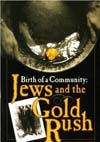
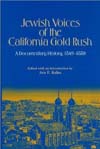
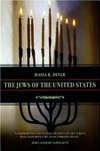
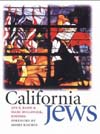
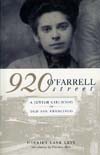
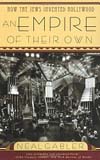
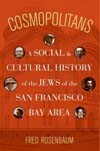
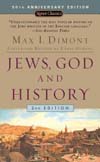
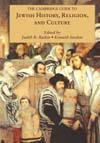

 Copyright ~ 1998-2018.
Copyright ~ 1998-2018. 